Chat 21
Chat 20 Quiz Question was:- Here is a grand old lady. What was she doing? The answers is:-
She was a
knocker-upper, a profession started in Britain and Ireland during
the industrial revolution when alarm clocks were unreliable and
expensive. She was Mary Smith in London using her pea shooter
to rattle windows. She charged sixpence a week to wake up her
clients. Various methods were used, often the knocker-up would
use a long pole.
Correct answers from:- mick Leach, Mick Dughan and Jackie
(mostly Jackie), Don Eades.
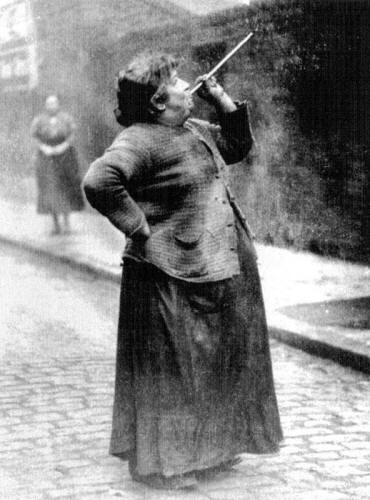
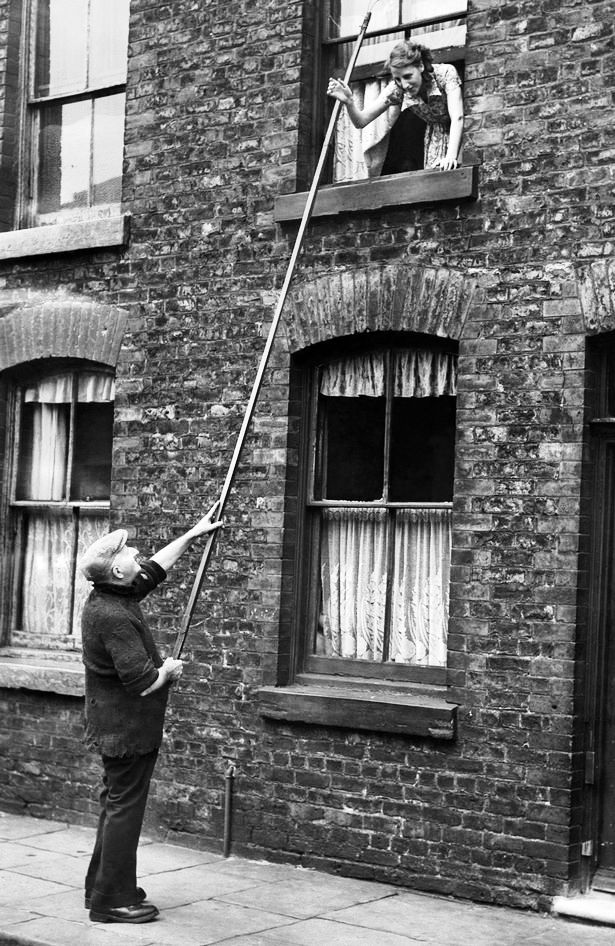
Chat 21 Picture Quiz:- Which is the odd one out? Answers by email to: edgrew@virginmedia.com
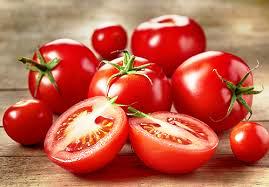
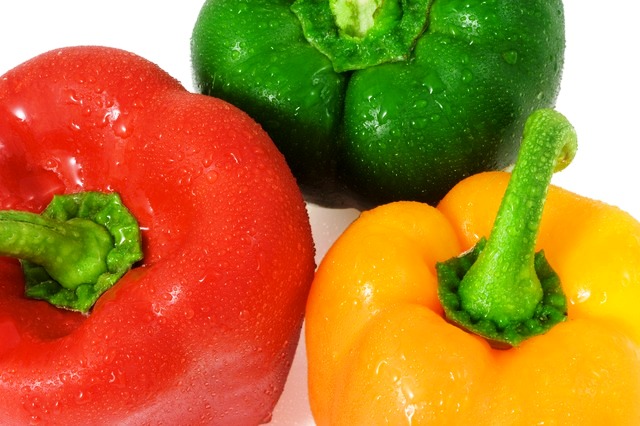


Racing Remembered
Charles Dickens wrote, “My advice is to never do tomorrow what you can do today. Procrastination is the thief of time.”
You might ask what that has to do with racing? Here is something that happened while my brother John was racing my vintage Sunbeam, an example of procrastination.
We were at Cadwell Park for our last
meeting of the season.
I don’t remember what year it was or how well the season
had gone for us.
What I do know is that like all years it was busy as we did all
the Vintage Racing Championship rounds.
Keeping any old bike running well can be time consuming
especially when you are asking it consistently to run flat out
as happens on track.
Some years we had more problems than others but this year I
think the bike had run well with not many problems ……. until our
last race of the day at this last race of the season.
The engine stopped and there was no compression.
Bad news but not too bad as we had all winter to sort
things out … didn’t we?
A quick look after taking the cylinder
head off revealed a holed piston.
The head had come off the inlet valve and punched the
hole. Inlet valve
problems are not unknown but usually it is the exhaust valve
that suffer most from this as they are blasted by super-hot
exhaust gasses. (We
did have the head come off an exhaust valve once but that is a
story for another time.
����) We didn’t find anything
else wrong so we just needed a new inlet valve and another
piston to be good to go at the start of the next season and that
was months away ........ wasn’t it?
Charles Dickens used the word
procrastination in his words of advice quoted at the start of
this tale. It is not
a word that is often used these days but if you look it up it is
“the action of delaying or postponing something.” Instead of leaping into action to get ready for next
season, we procrastinated. We
got on with other things; enjoying Christmas and welcoming in a
New Year with little thought about getting the engine sorted for
the coming race season. Time marches on and when the regulations and entry forms
arrived for the new season, we thought we had better make a
start by getting the new parts we needed.
A new valve that would fit was easily
found but a new piston we could modify to fit was proving a lot
more difficult. We
tried all over the place to find a piston without any luck and
time was still marching, in fact it was starting to sprint. We weren’t running around shouting, “don’t panic” like Jonesy in Dad’s Army but we were starting to
get a bit desperate.
Desperate times calls for desperate measures. How about we get the hole welded up? Who did we know that could weld aluminium? Ray Pettet sprung to mind. I knew Ray from when I riding in classic trials where Ray
was very good on his 500 Ariel. He had also worked at Rolls Royce fabricating and welding
aluminium parts for jet engines, so he was also a very good
welder. Ray said he
could weld the hole so being a bit cheeky, I asked him if while
he was welding up the hole could he stick a bit more aluminium
on the top to raise the compression a bit?
Ray came up trumps and did a fine job. John machined the piston up and just in the nick of time
we were able to get the engine back together in time for the
first race of the season. Phew!
It is unfortunate to have a hole in
your piston but the hole led to a bonus as after welding and a
sticking a bit more on top the extra compression gave us a
performance boost too.
����
There is an old Spanish proverb that says, “Tomorrow is often the busiest day of the week.”
Don’t procrastinate, or like us you might find that tomorrow might be a lot busier than you expected!
Next time I might tell you about
losing my head, no not my actual head but the head off my
Sunbeam's exhaust valve.
Part Three of Pat Robotham's Motorcycling Memories.
Over the next
year I put the Square
Four together. It had come from a VMCC vintage racer who had
kept the forks and front wheel for his racing bike.
Fortunately someone had discovered a large batch old WD Ariel girder
forks at a military supply depot and from being unobtainable they
became plentiful over night. So long as you could afford them,
and did not mind that they were 1 inch longer than the civvy ones,
which I didn’t. On the positive side they were brand new so
needed no refurbishment which saved some cash. The front wheel
came from Bolton autojumble and was another fortunate find.
All together it looked handsome and I
decided to hitch it to a Watsonian sidecar I had got hold of in
another deal . It looked good and the first ride was an eye
opener, smooth, powerful, decent brakes and suspension. Then
fifty miles in to the trip it stopped and would not start until
completely cool. This pattern kept repeating itself, and I got
fed up with taking it out and having to wait until it cooled to come
home again.
I entered the VMCC International assembly
again held at Harrogate, on the Model F and met another competitor
riding a 1939 Square Four like mine. But he had rigged up a
coil based ignition system, it turned out that the problem was
common with all these early pushrod fours. Basically the
magneto is bolted onto the crankcase immediately behind the rear
cylinders, and got so hot that the insulation on the windings broke
down, and you lost sparks. Apparently this had happened when
the bikes were made and Ariel kept paying for replacement armatures,
but to no avail. My armature had come as a new old stock item
from an old dealer so was probably a faulty replacement anyway.
I did the Heath Robinson coil conversion
which, worked OK but was not perfect, and my confidence was blown so
it had to go.
I took it to the
Beaulieu autojumble that
September and sold it to an American within a few minutes of getting
it out of the van, £1000, the most money I had ever got for a bike.
It burnt a hole in my pocket straight, as a few hours later I
spotted on a stall an early flat tank White and Poppe engined Ariel
missing forks and hubs which had been converted into a saw bench.
I knew these flat tank Ariels were rare
so it had to be mine, for
£120. I also saw another Ariel, a 1953 500cc spring frame VH,
so bought that and put it in the van as well.
So at a stroke I became one of those loony
motorcycle collectors, with a favourite Marque completely by
accident.
Those two bikes got put together and running
over the winter and next spring, I took the VH for a ride and just
outside Coalville on a long sweeping bend I dabbed the back break
and nearly ended in the ditch. On getting home I checked
everything, all was as it should be. Then I got talking to
other owners, “yes they do that, it is the routing of the rear brake
cable and brake arm which can self servo if you apply it while
hitting a bump in the road.” Apparently Ariel changed the design for
the next year, but did not bother to put anything about it in the
manuals. I just had to swap the position of the brake
arm. However confidence again damaged so I fitted a Jet
80 sidecar, and used it for the 8 mile round trip to work.
For various reasons, I decided I needed to
have a modern bike, so put the Nimbus up for sale, and a guy from
Lancashire rang and asked if I would swap it for his Mk3 Commando.
I thought it sounded like a good idea so the deal was done and I
rode up to Nelson one November and did the swap, riding the Norton
home, in the freezing cold in the dark.
On first acquaintance it was a nice bike.
A bit heavy but smooth and powerful. I commuted on it and we
went on a camping holiday in Belgium and Holland on it. I
always felt the clutch with its diaphragm spring was heavy but
returning from Brighton through the centre of London was absolute
agony, I got to the stage where I had to stop just to rest my clutch
hand. In addition it did not like running in traffic and
the tick over became increasingly erratic, add to that fact that the
electric start did not work most of the time, and it became clear
that the customer was sorting out the build issues of the
manufacturer. It went to someone who really wanted one.
I used some of the money to buy most of an
Ariel Fleet parcel truck. Obviously the madness was at its
peak by this stage. This truly awful device was built by Ariel
in 1931/2. It weighed about eight hundred pounds and was
powered by a 550cc side valve engine de-tuned to a CR of 4.5 to 1.
O to 25 in two minutes , according to the road tests.
I found an engine for it from a wood yard by the Dartford
tunnel, cleaned painted and assembled all the mechanical parts
including the Ackerman suspension/steering, which was heavy, and the
Dunlop disc wheels which were very heavy. Stood back to
look at my handy work and asked myself out loud, “what the bloody
hell have I got this for.”
The madness passed and I swapped it with a
man who had a 1911 single cylinder Indian which he had taken to bits
including the frame, and did not know how to put back together.
My first veteran.

.jpg)
As if that was not enough to do I wanted to
ride in VMCC off road trials, having been persuaded by Titch Allen's
son Roger who I had become friends with through the Notts and Derby
VMCC section.
I needed a bike, and at a country fair near
Ashover in the stationary engine section, I met a man, who seeing my
crash helmet asked if I would like to buy another bike a 1939 BSA
250, no forks or wheels and currently being used as a home made
cultivator on his allotment. This seemed to me to be the ideal
basis for a trials bike, I have no idea why but it was £20 so I
bought it and turned it into my first trials bike.
Trevor Shakespeare's AJS Part 5.
Research followed, as it was a difficult decision, to leave as-is, or renovate. The frame had no paint at all, and the wheels needed rebuilding, but other parts had original paint. I decided to take a middle option; what could be left would be and what had to be painted would be. Help was enlisted from the VMCC community. The machine was nominally 1919, but the engine was from late 1917. Original unfaded paint colour was found under the horn clamp, I found a paint manufacturer in Hull who advertised as being able to supply any British Military spec. colour from 1895 onwards. A visit followed and after a very thorough examination of the items against the quantity of large swatches it was decided that it corresponded to a batch supplied in late 1917. The company supplied the colour in both brush on, aerosol form and also a suitable etch primer.
I had decided to renovate the wheels first, so built a 'Les Taverner' jig as detailed in "The Vintage Motorcyclists Workshop" by "Radco". I wanted to reuse the rims if possible as this machine had 48 spoke wheels instead of the more usual 36 or 40. The fossilised tyre was a Michelin 700 x 85. The wheels appeared to be original and the spoking was unusual in that the spokes were crossed twice as photo. (Once is normal). Most of the brass spoke nipples unscrewed without too much trouble and the rims went to a local soda blasting company. This showed up a couple of pin holes which were Tig welded. The original bearing were cup and cone, like a large bicycle bottom bracket, with 11 balls each side. As these were worn out I modified the hubs to take modern ball journal bearings. Central Wheel supplied new spokes and nipples as samples, everything was painted and reassembly was attempted, trying to twice cross the spokes. After several attempts I managed to lace one wheel, but was unable to true it radially or laterally. Every other wheel I looked at only had spokes crossing once, so eventually I built both wheels like that and trued them. Great, I now had a pair of WW1 green wheels with the original size rims, so new tyres seemed a good idea.
This was were the fun began. I had never had a bike with beaded edge tyres before. Apparently they are sized on the outside diameter of the tyre, not the rim as modern machines. After much searching I could not find 700 x 85 tyres, 26" x 3" was the nearest available. Now I needed new rims as these are larger than the 700 x 85s. Oh joy! Where to find replacement 48 hole rims for 26 x 3 tyres? Trev. ............... Part 6 to follow.
Words of wisdom:- You can tell a lot by a woman's hands. If they are around your throat she's probably a bit upset.
John Grew's Vibations Continued:-
You may remember that in Chat 20 John left with a mystery involving the new Mikuni carburettor Here is what he found and the solution to the problem. Eddy.
The bike ran well, but my wife, Julie,
who is my apprentice engineer, noted that the engine
occasionally missed a beat on small throttle openings.
This was the only time one could detect a slight hiccup.
Larger throttle positions were fine, so we just rode around and
enjoyed the general experience. I thought that one day I
would investigate in depth. This came to a head though as
the bike started to lose some umph at circa 14,000 miles.
The usual checks were made, including the
carburettor, but eventually I reluctantly stripped the motor to find
a badly worn camshaft on all lobes. I was bitterly
disappointed, especially as I’d fitted proper filtration and high
speed oil pump.
I conducted some research and found the
answer.
Apparently lots of Commando camshafts were
not up to standard. My opinion was that in their haste to
produce the Commando they had lost the old AMC metallurgy and heat
treatment skills, recognised as a strength at the Plumstead factory.
The old Atlas cams were as tough as diamonds in comparison, so I
tried to find a good second hand example. During my search
Tony Harris mentioned that I could have a camshaft from his
experimental twin. It turned out to be a Dunstall sporting
camshaft that has the advantage of holes in the cam base circles.
Sod’s law dictated that Tony had “twisted” his wobbly crank the
other way, so I had to cut and shut again to suit my crank timing.
I also tapped into the pressurised rocker oil feed and gave the cams
a positive oil supply. The camshaft is partially hollow and
allows this.
I was really annoyed that I had to
re-engineer another special offset camshaft through no fault of my
own and dug a little deeper into the background of “soft” Commando
cams. A real Norton enthusiast in the States had also
succumbed to soft cams in his Commando engine and with his
engineering knowledge and contacts investigated further. He
borrowed a ‘Brinell’ hardness testing machine and went around as
many of the Norton spares shops as he could a few years back.
He asked if he could test their “new” old stock Commando camshafts.
I can’t remember the exact figure, but I seem to recall that well
over half were as soft as – well, you know! It was perhaps
some consolation to me.
I was keen to get the bike on the road,
especially with the new sporting cam. I had taken the
opportunity to fit some second hand Atlas lower compression pistons
as I wasn’t lusting after a rocket ship. I hoped that a lumpy
cam and low compression would produce a nice combination.
I was pleased with the new power
characteristics, but that low throttle ‘hiccup’ was worse than ever.
There was still a good tickover and it went very well as the wick
was turned up; a mystery indeed.
I did the usual things of swapping over
coils, high tension leads, plugs etc, but no luck. Then I had
an idea of using my Gunson Colourtune Plug. This is often
treated as a bit of a gimmick and in fact I’d never used mine until
now. I replaced the right cylinder plug and with single Mikuni
carb set to a fast-ish tickover had a look at the blue combustion
process through the glass plug body. “Blue, blue, blue” and so
on; great. When I replaced the left plug and repeated the
process I witnessed – “Blue, blue, nothing, blue , white, nothing”
and so on. This was that longstanding “hiccup”. I
reasoned that the new sporting camshaft’s increased valve overlap
exacerbated the problem of using only one carburettor on an engine
with out of step piston strokes. One induction pulse was
robbing the other cylinder of mixture. Larger throttle
openings weren’t affected by this bias. All I did was fit two
old concentric carbs and bingo, problem solved.
I had actually thought about this when I
originally fitted a single carb, but my reasoning was that Harleys
and many vintage V twins used a single carb. They had uneven
firing and induction pulses, so mine should work in theory. I
later read an article reinforcing my later findings in that a second
carburettor was necessary to obviate a mixture bias from overlapping
induction phases.
So was all this a success and what is it
like to ride? The bike has now done circa 20.000 miles. It
sound like a V twin and the high level exhaust I made isn’t noisy.
The secondary vibration has disappeared, so
there isn’t any high speed tingle vibration. It does still
vibrate, but this is diminished and is like a single engine’s
“thudding vibe”.
The engine might turn out to be “as smooth as a baby’s bum”, then again, we all know what a baby’s bum is capable of! John Grew
Coming from an engineering background I have often wondered how some of the more complicated metal shapes are made. Here John Goodall gives us the answer. Eddy.
Metal Spinning and use in vintage motorcycle parts.
My last full time employment was working for the National Grid
Company a successor company ensuing from privatisation of the
CEGB (Central Electricity Generating Board) in the 1980’s into
several separate companies. I ran a site with a central stores
and three teams one of which carried out overhead line
maintenance, the second sub station remote control wiring and
interconnecting etc., and the third a mechanical engineering
workshop based on the premises housed on the Old Power station
site and buildings built in 1939 to power Loughborough. This all
served the Midlands Region at the time. One of the activities in
the workshop was to manufacture control desks and cubicles for
the power industry. Some instruments needed housing in specially
made round top hat section containers fitted into the main
structure for protection and these were procured from a company
of metal spinners in Shepshed near Loughborough.
I used to visit the spinning company and got to see spinning
actually taking place on the antiquated machinery. The machines
used were like a large wood turning lathe with a high end load
capacity as well as radial and the usual tail stock. The tools
used were all manually operated and supported on a flat bar with
two or three vertical bars, which allowed the hand tool about
two feet long to be levered against these bars to bear onto the
work to be spun. A flat plate to be worked is pressed by
pressure pad from the tailstock onto the end of a usually steel
former of symmetrical shape. The tool is applied and working
from the inner diameter outwards the metal is worked over the
former? A soap lubricant is used to prevent pick
up and welding of the metal component to the tool made from HSS.
The more malleable the metal the easier it is to form and the
process inevitably causes work hardening, which often means
annealing the metal before the work can proceed. Some materials
such as brasses and aluminium alloys often can be finished
without this need. I have attempted to metal spin on my own
lathe and the loads are such that it is difficult because of the
great leverage needed and the speed and end thrust capacity is
insufficient and I concluded it is not worth the effort apart
from being very difficult. I did manage a few simple jobs, but
nothing worthwhile.
I realised the process could be used to advantage in producing
parts for some of my vintage motorcycle parts that had become
very difficult if not impossible to find. I found out what sort
of tooling was needed to produce magneto end covers to start
with and being an ex-toolmaker set to and made the chucks to
suit Miller and some Lucas Magneto points covers. I had them
made in brass as it can be plated nicely and would not rust like
some Lucas and other makers parts in steel. I started to hawk
them round the vintage bike jumble sales and one day the late
David Earnshaw came up and being his usual witty self said “I
see you are in a spin again”. Then he said that’s what you
should call yourself and so “Inaspin” was born. Things
progressed and I advertised in Old Bike Mart. The late Ken
Hallworth asked me to do an article which I did and soon orders
and enquiries developed into many other projects. I ended up
making Miller and Lucas headlight rims, a few headlight shells
and Riley side lights complete with bayonet fittings. All parts
being metal spun with some other operations often being needed
like knurling the rims of Miller points covers. Making the parts
for the Lucas bayonet fitting headlamp rim and Riley side lamps
etc. Another item I must have made many hundreds of were License
holders in brass, I show the original for them in my pictures.
This comprised two spinnings with a riveted on fixing arm and
the cover held on with four SS screws and nuts with spring
washers. I went so far as producing special rubber seal to
encapsulate the glass and license disc to keep things dry. The
VMCC took these on for resale for some years. Some special
projects were made for the Douglas Owners Club spares scheme
notably wheel bearing dust covers and even fuel filler caps.
Norton clutch covers from 1929 were also made in aluminum just
like the originals, Another was Vincent brake dust shields. I
made hundreds of them for a well known Vincent parts supplier in
Wales. ( I think?)
1. Villiers and Bantam mag covers, horn flares, bell
mouths, points covers.
2.Parts I replicated plus one spinning
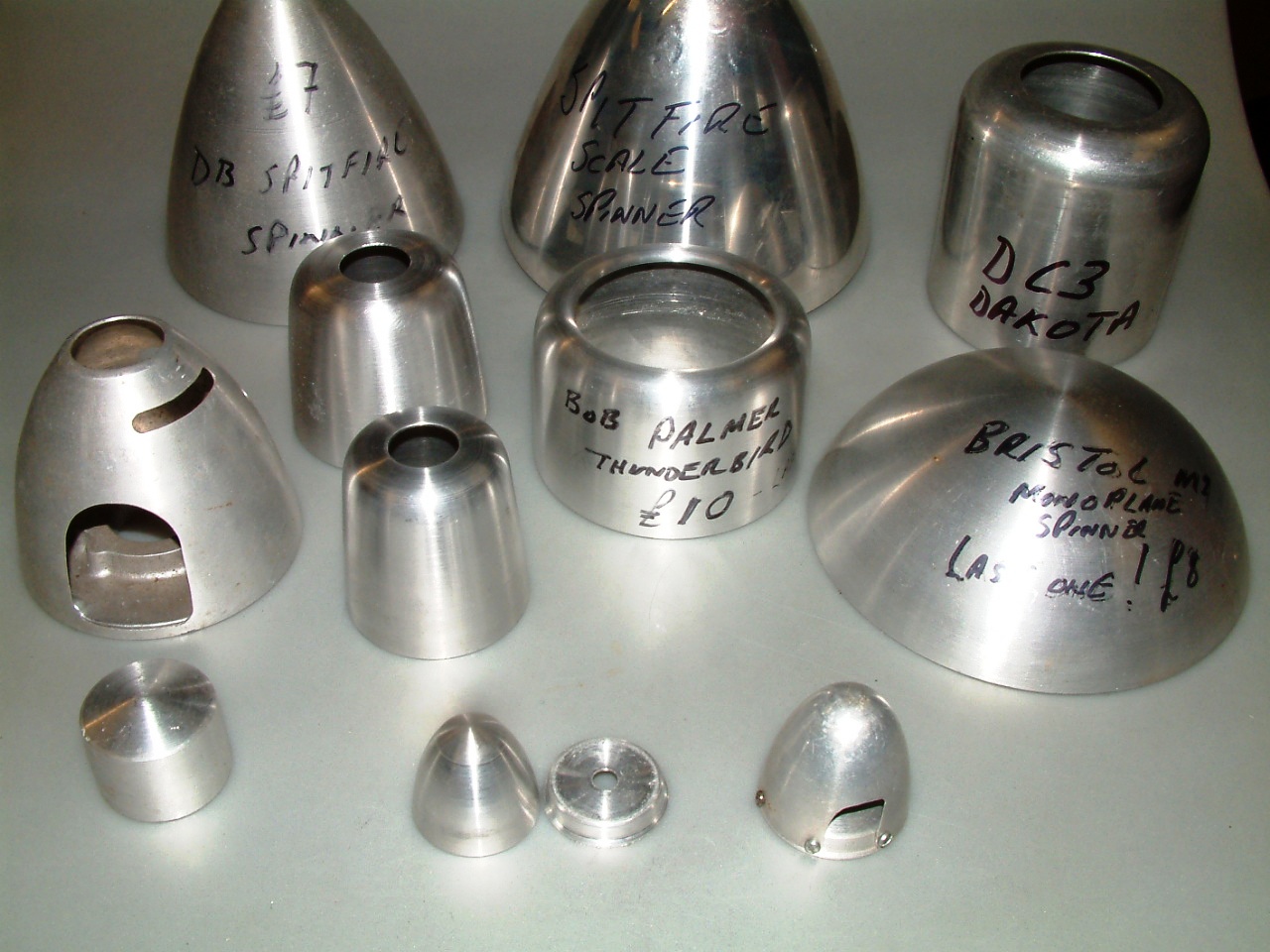
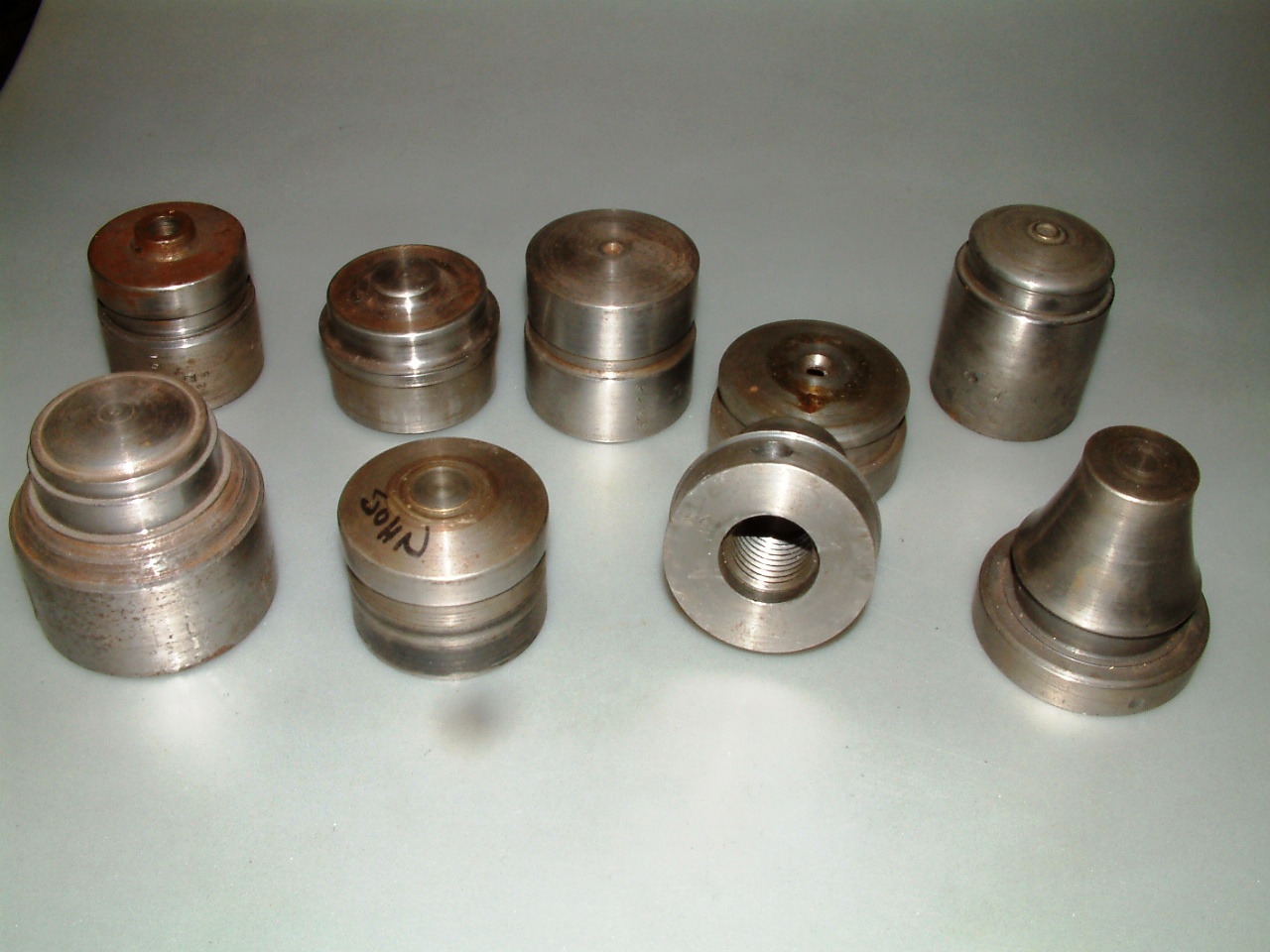
Tooling for points covers and bell mouths etc.
Model plane spinners, cowls, etc
The business was taken on by my son Paul who ran it off my
tooling for some years, but it eventually foundered when the
spinners decided to run down their work pending retirement and
now it is virtually dead, although I still have a few parts left
to illustrate the possibilities. The basics that are needed are
a symmetrical shape that is not re-entrant. For instance if your
part is waisted and reduces in diameter from the spun end it
will not come off the chuck or tool?? In industry they got round
this by making the chuck sectional with a series of tongued
parts that held together and could be dismantled by removing a
key piece from inside the finished tool/spinning and then the
other sections could also be removed. This was very expensive to
make and beyond what I could produce with a lathe only which is
all I had at the time. This was really needed for headlamp
shells, but I made the reduced forward nose part where the rim
sits as another spinning and then joined that to the rear part
by soldering. Each part could be removed from its tool without
problem. Most materials can be metal spun, but some are very
difficult to spin like Stainless steels, which need constant
annealing even with special high ductility spinning metals.
Modern spinning is done as I understand it on CNC controlled
machines using so called “Air Spinning”. Here hydraulically
controlled rollers are used whose path is steered by CNC to form
the inside curve, or shape say of the part with external rollers
forcing the metal against them to produce the part. Very
nefarious and difficult to imagine I have never seen it in
practice.
My interest in models led me into making spinners for model
aircraft, fuel tanks and cowlings for enclosing radial engines
in scale models. One of the last series of jobs I produced was
for the head lamps and wheels made in two parts for the Austin
pedal cars for John Dumelo in Burton. John apart from working in
the family Stove enameling business is an avid enthusiast of all
cars and pedal cars and a keen cyclist as well.
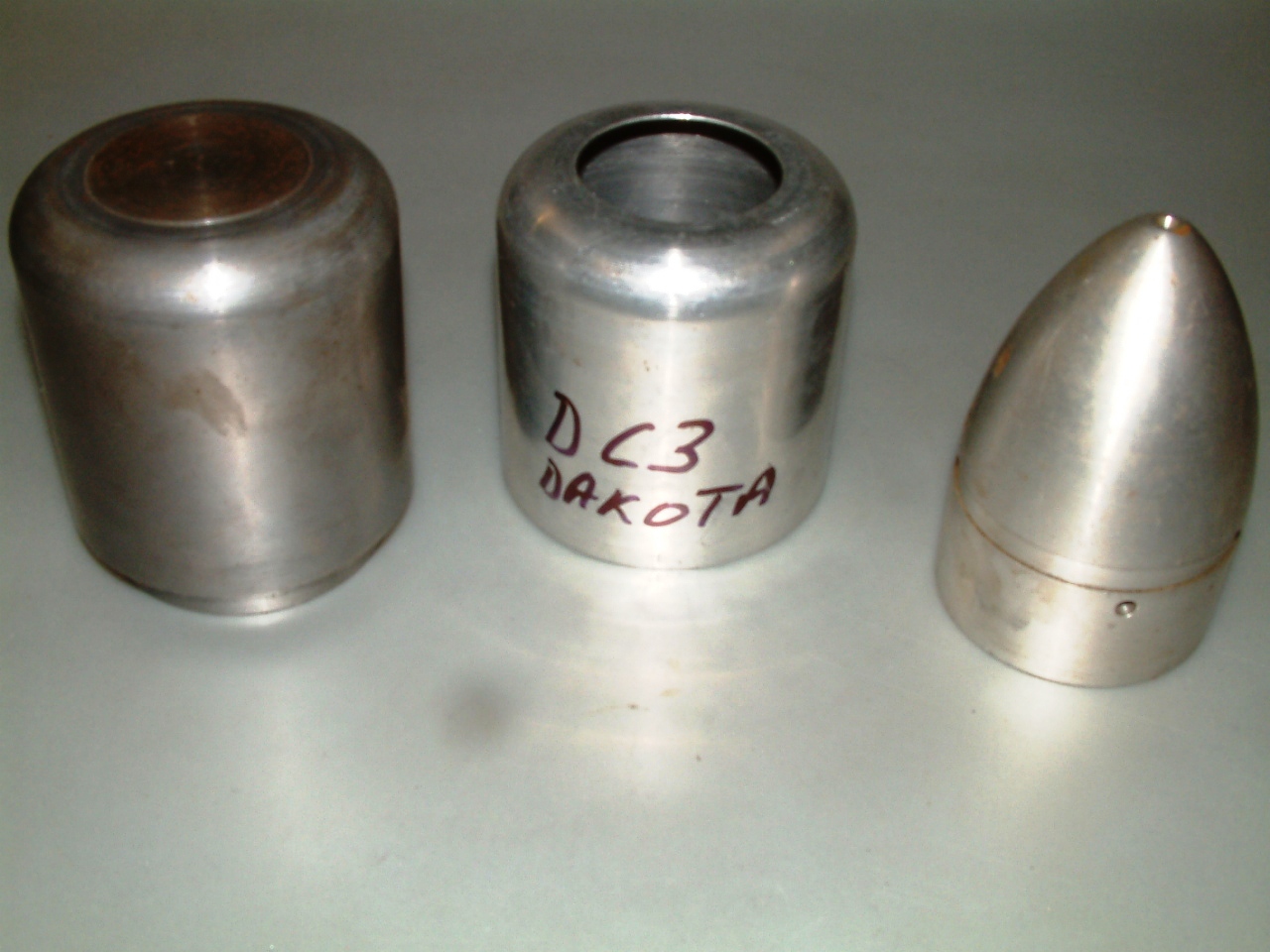
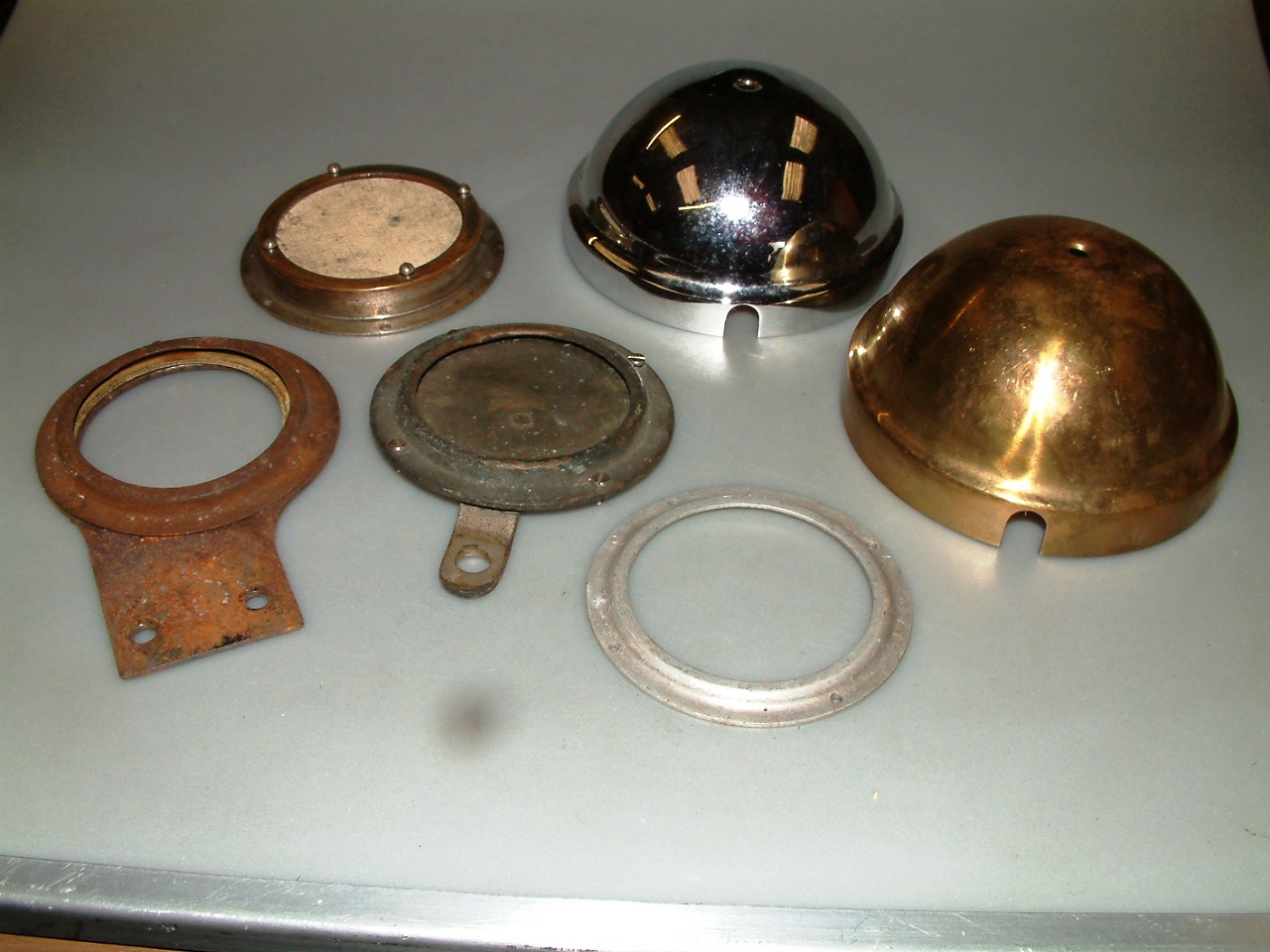
Tool and spinning for a DC3 model and spinner chuck in
alum.
Acetylene rim and alloy reflector, Douglas parts and misc.
In summary metal spinning is a very cheap alternative to press tooling where the component is suitable, or where with some ingenuity you can get round the re-entrant problem. and the only difficulty today is that the traditional Metal Spinners themselves are disappearing fast, like most engineering skills in this country unfortunately. John Goodall.
Words of Wisdom:- A recent study has found that women who carry a little weight live longer than men who mention it.
Ariel VNH V twin update. Pt 1. A little History
First I thought I should remind those who
read about it the first time and for those who have no idea what the
VNH is a reminder of how it started before I get into where I am
now.
During the early part of Jan 2007 I thought
I would challenge my self and attempt to build a V twin engine based
on a pair of late 50's Ariel top ends. At the time I had a small
engineering factory making electronic magnetos under the BT-H name,
so had CNC facilities and lots of other toys to play with.
I first designed and drew an engine on my
CAD, but the problem was the crankcases. A few months later in June
‘07 an advert appeared in the Ariel club magazine from one Adrie de
Graff in Holland.
Adrie, being very creative had made a V twin
engine by welding two sets of damaged Ariel crankcases together and
bolting two sets of iron twin port heads on in a V twin pattern.
However, there was no insides and he wanted
somebody (mug) to finish the job off. The only thing he wanted was a
ride if and when it was finished and everything was free.
I quickly wrote a begging letter off and
convinced him I was the one to do this.
Fortunately, I was chosen one
to do the job. To my surprise the motor was in
After acquiring it I found out the heads and
barrels had to be returned to the owners. This was not a problem as
I didn't want them anyway. After a lot of looking and thinking I
decided to contact Adrie and ask if I could make the welded castings
into patterns and cast some stronger cases with certain parts built
up for strength and machining purposes. If you can find June and
July 09 Cheval the long tail is in there.
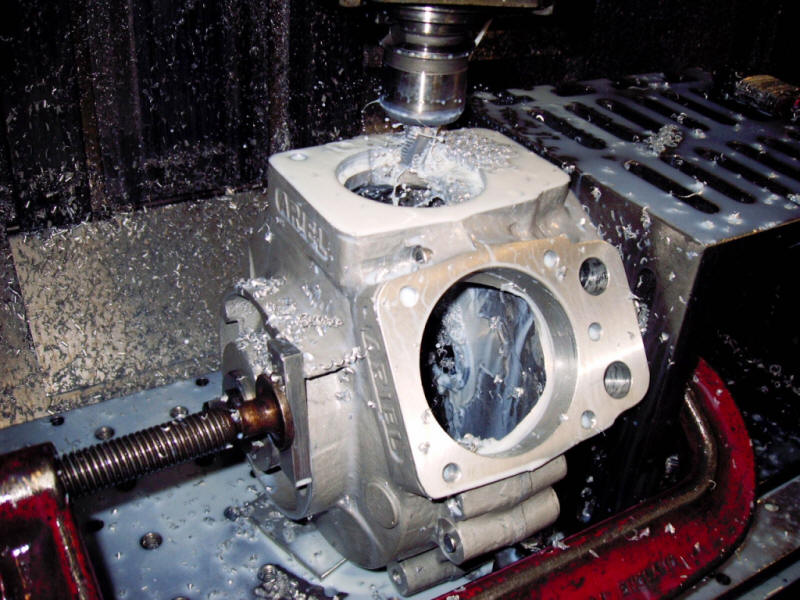
Machining the new crankcase casting
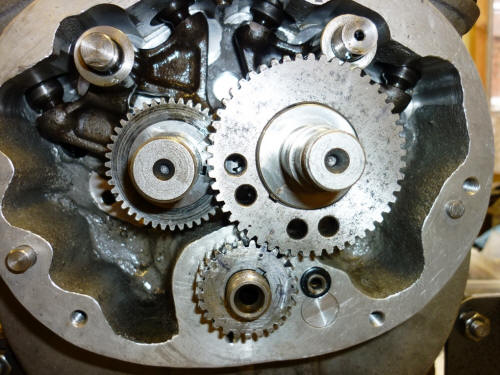
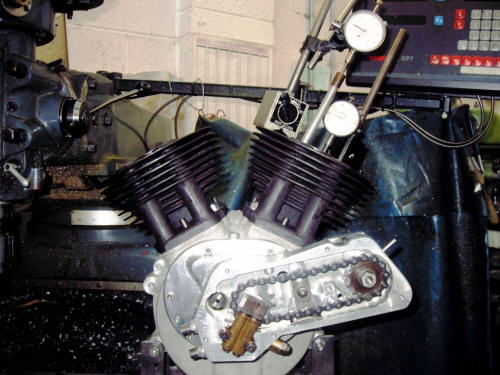
New cam
gear arrangement
Checking timing
The end result was finished and fitted into
a Norton F/bed chassis and it fired up first kick, yes it did,
really. The motor had a few small issues and had some updates but
the basic thing did about 2000 miles in this form.
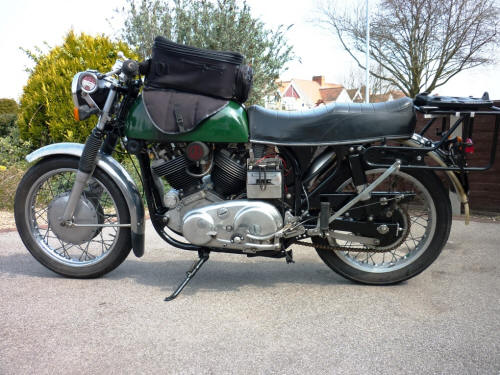
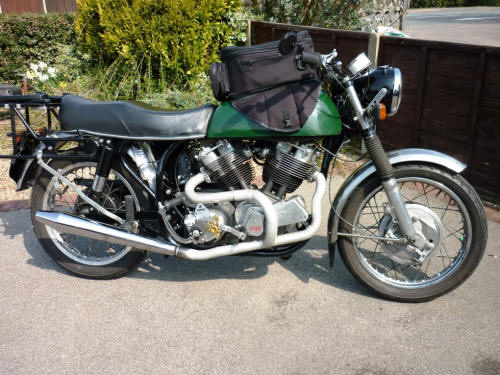
The completed engine fitted in a Norton Featherbed
frame
Life and time goes on as we know and the
intention was always to fit the engine into a mid / late 50's Ariel
cycle one day.
A couple or so years later John Mitchell
(Ariel magazine Editor) advertised a complete mid 50's NH which was
last on the road in 1974, according to the tax disc. I snapped it up
and as John was passing my way he kindly dropped it off at my house.
As before, time passes and by this time I had taken the motor out of
the Norton Featherbed and used the frame for another project and the
engine sat under the bench while other projects and life passed by,
including early retirement in 2011.
In the meantime the original log book for my
donor bike had been acquired but little else in the way of progress
until the middle of 2018.
I decided to do some alterations to the engine.
When I cast the crankcases I had 3 sets
made. The second set of cases were made into an engine based on two
ES2 Nortons. This had a different drive to the cams and the capacity
was over 1000cc. I also made an Egli type frame to mount it in and
fitted and electric starter. This is another story though.
The experience I gained on the second engine gave me ideas for the VNH Ariel so next time I will tell you about what I have done in the interest of a better engine (I hoped ����). Tony. To be continued ......
